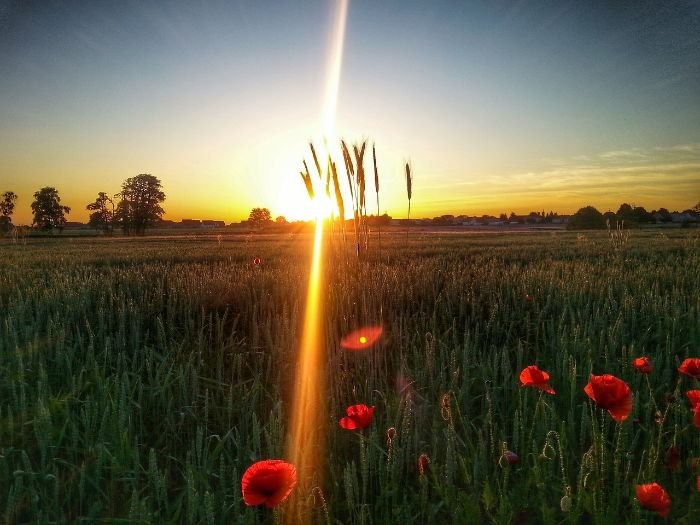Updated October 25, 2025
Sunlight and watering needs rise and fall together. When light intensifies, evaporation quickens, roots pull harder, and shallow watering falls short. Cooler, shaded spots move slower and demand a lighter touch. The trick is to notice the early signs such as warm leaves, lighter soil, or a quick crust forming on the surface, then adjust before plants begin to struggle.
Matching irrigation to light keeps moisture where roots use it, stretches each watering cycle, and stabilizes the garden through shifting seasons.
Key Takeaways:
- Match irrigation rhythm to how sunlight drives soil drying.
- Track exposure patterns monthly to catch shifting hot spots.
- Recalibrate tools and emitters after heat waves or long rains.
- Avoid topping off bright zones with frequent shallow drinks.
- Run quick morning checks to confirm timing before the day warms.
Table of Contents
How Sunlight Drives Water Loss in Plants and Soil
Bright light ramps up heat and pulls water from leaves and soil. Understand the mechanisms here and every exposure-based decision later becomes straightforward.
What happens to water under sunlight?
Under direct sun, leaf and soil temperatures rise, which speeds both transpiration and surface evaporation. On warm days, sunlit leaves commonly run 5-15°F above air temperature, so stomata move more water to cool the leaf and nutrients ride that flow.
Water at the soil surface forms a thin film that breaks faster under strong radiation. Expect the top half inch to lose moisture 2-3x faster between 11:00 and 15:00 than in the early morning, especially on bare, fine-textured ground. Shade slows the heat load, so the surface film persists longer and subsurface moisture remains accessible.
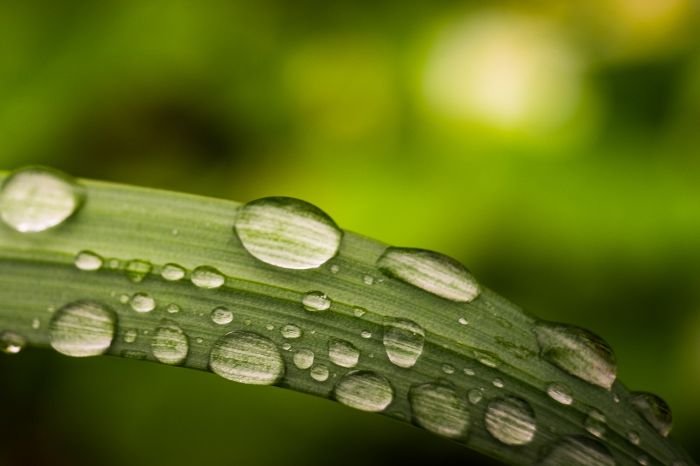
Pro tip – If midday leaf edges curl while morning leaves are flat, the plant is pushing water to cool itself rather than to grow. That points to higher demand driven by light, not a root failure.
Midday vs morning radiation load – timing effects on demand
The sun’s angle concentrates energy at mid-day. Even with the same air temperature, a bed that holds moisture until 10:00 can start losing it quickly once the sun sits high. I schedule checks right before noon on hot spells because that is when a healthy plant first shows light-driven thirst – perk at 09:00, slight limp at 12:30, recovery again near sunset if soil reserves are adequate.
Morning watering reduces loss to flash evaporation because surfaces are cooler and winds are calmer. The same volume applied after lunch often yields shallower penetration due to faster surface drying and higher leaf temperatures.
Airflow and surface exposure amplify loss
Wind strips the humid boundary layer from leaves and soil. A light breeze of 3-7 mph can double evaporative demand compared with still air under the same sun. Flat, open beds dry faster than recessed or sheltered spots because more surface meets hot, moving air.
Raised edges, gravel paths, and dark paving next to a bed reflect heat and accelerate drying on the sun-facing side. If leaves point toward these hot surfaces and wilt first on that flank, sunlight plus airflow and nearby heat are acting together.
Pro tip – Track a simple triad on bright days – sun angle window 11:00-15:00, average wind above 3 mph, and exposed surface around the bed. When two of the three are high, expect faster drawdown even if the morning looked fine.
Closing check – Light adds heat, heat speeds movement of water through leaves and off soil, and open airflow multiplies the pull. With this cause map in mind, exposure-based diagnostics and schedules become precise rather than trial-and-error.
Diagnose Dry-Down by Sun Exposure
Exposure sets the pace of moisture loss, so read the surface and leaves before watering by sunlight exposure. Use quick, no-tool checks that match each light level and you will water on need, not on habit.
Does sunlight dry out soil?
Yes. Direct sun raises surface temperature and speeds evaporation, so the top layer loses moisture faster than shaded ground under the same air conditions. On 85-95°F days, a full-sun bed with light breeze can see the top quarter inch turn pale and dusty within 2-4 hours after a light soak, while nearby shade may hold color and cohesion past late afternoon.
If a sunlit patch lightens in color, forms a fragile crust, and warms to the touch by midday, expect roots to pull harder. In shade, darker, cool soil with a slightly tacky feel points to slower loss and wider gaps between waterings.
Full sun cues – fast loss and early afternoon flag
Look for pale, crumbly surface texture by lunch and a slight midday droop that recovers near sunset if subsoil moisture remains. Leaves may feel warm and soft at the edge first on the sun-facing side of the plant.
Press a thumb to the surface and twist gently. If grains shear and dust off the skin, surface water has flashed off and the next drink should go deeper than a splash pass. Avoid topping off with frequent sips that only wet the crust.
Pro tip – Track recovery at dusk. Perk-up by evening means the profile still held water; no recovery means the root zone ran short, not just the surface.
Partial sun cues – slower loss with heat spikes
Expect mixed signals on days with moving shade. Early afternoon may show brief limp followed by evening bounce if clouds or structure give relief. Surface stays mottled in color rather than uniformly pale.
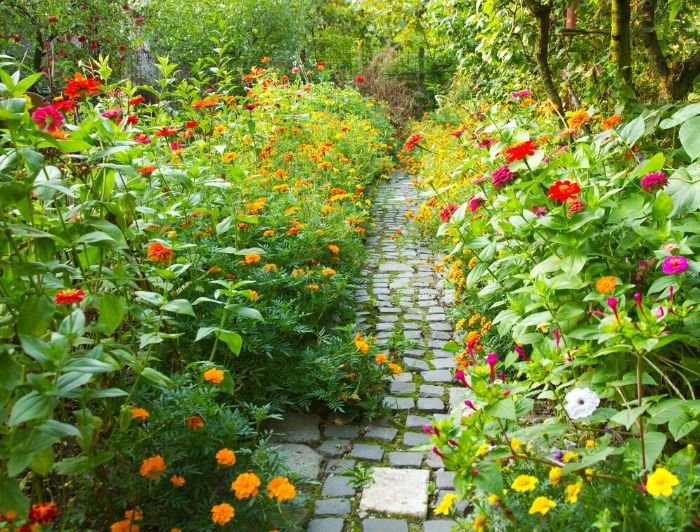
Scrape a thin line with a plant label. If the color darkens just below the crust and the slice holds shape, delay watering and check again after the hottest window. Heat waves may compress the interval by a day even in part sun.
Deep shade cues – lingering moisture and rot risk
Shaded beds keep a cool, darker surface and hold form when pinched. Leaves rarely droop from light demand; yellowing lower foliage or a sour smell after rain points to saturation rather than thirst.
Lift a corner of mulch and touch the soil underneath. If it feels cool and slick and the clump shines, extend the interval and focus on air space around crowns to prevent root stress from trapped water.
Closing note – Match what you see and feel to the exposure above, then time the next irrigation window accordingly. Clear cues at the surface and leaf tell you when to act without reaching for instruments.
Full Sun vs Shade Watering – Intervals, Depth, and Method
Exposure dictates schedule and volume. Translate light level into interval windows, target depths, and delivery methods so roots get consistent moisture without surface-only sips.
How often should I water my plants?
Match frequency to light category. In bright, open beds, plan short intervals with deeper drinks; in shaded ground, widen the gap and reduce volume. Containers in strong sun need the tightest cadence because they heat and vent moisture faster than soil beds.
Pro tip – When you change interval, also change volume. Shorter gaps with shallow passes keep roots near the surface; longer gaps call for a deeper soak to reach the active root zone.
Full sun routines – shorter intervals and deeper soaks
In summer heat, aim for 1-2 day intervals for in-ground beds during 85-95°F spells, with a soak that wets 4-6 inches of profile. Use drip or soaker hoses to deliver slow, uniform moisture that reaches below the surface crust.
Containers in unobstructed sun often need daily checks in hot weeks. Water with a watering wand or rose head until you feel the pot weight rise meaningfully; repeat small volumes encourage shallow roots.
Partial sun routines – moderate intervals with heat spikes watch-outs
Plan 2-3 day intervals for beds that get morning light or moving shade. Target 3-5 inches of moisture penetration and choose drip or a gentle wand pass that allows brief absorption pauses rather than one quick splash.
During a heat wave, compress the interval by a day without changing the per-soak depth. That keeps roots supplied while avoiding constant surface wetness.
Shade routines – extended intervals and lighter volumes
In full shade, widen the interval to 3-5 days for in-ground beds in warm weather. Apply a modest soak that reaches 2-4 inches, then let air spaces reopen before the next watering. A watering can with a fine rose works well where flow control matters.
For shade containers, scale volume to pot size and mix. Heavier mixes or large vessels hold moisture longer; plan fewer, more measured drinks to avoid compaction and sour conditions.
| Exposure level | Interval window | Per-watering depth | Preferred method | Action cue |
|---|---|---|---|---|
| Full sun – in-ground | 1-2 days | 4-6 inches | Drip or soaker | Next cycle when surface lightens and lower layer still cohesive |
| Full sun – containers | Daily in hot weeks | Until pot mass increases and water reaches mid-profile | Wand or rose head | Next cycle when pot feels light and media color fades through top layer |
| Partial sun | 2-3 days | 3-5 inches | Drip or gentle wand | Next cycle after warmest period if subsurface holds form |
| Full shade | 3-5 days | 2-4 inches | Fine rose watering can | Next cycle when soil under mulch is moist but no longer slick |
Containers in sun shorten intervals even when air temperature matches bed conditions. Pot material and volume change heat gain and venting, so confirm cadence by weight change and profile wetting, not by calendar alone.
Closing note – Set your baseline from the table, then tune by exposure category. Keep intervals and depths paired, and choose delivery that favors infiltration over splash. That keeps roots supplied without chasing surface dryness.

Microclimates and Seasons – When to Recalibrate
Sunlight is not uniform across a yard. Walls, paving, pot materials, and the calendar all change how fast water moves. Treat each factor as a dial and recalibrate before the pattern drains roots or leaves them wet.
Hot spots and cool pockets around the yard
South and west walls, dark fencing, gravel courts, and concrete patios run warmer than open soil. Midday readings often run 5-20°F higher within 1-3 ft of hard surfaces, which pulls more water from the top layer and the leaf edge on that side of the plant.
If a bed near a wall droops earlier than the same crop 10 ft away, reclassify that strip as a brighter exposure for planning. Give that strip the higher-demand setting from your schedule map rather than treating the whole bed the same.
Pro tip – Stand barefoot on the patio at noon and then on nearby soil. If the patio feels hot while the soil feels merely warm, treat adjacent plants like they live one light class higher.
Containers vs in-ground – material and size effects
Pot material and volume set the dry-down pace. Terracotta and fabric vent moisture through the wall, so small vessels under 2 gallons lose water quickly on bright days. Glazed ceramic and thick plastic slow side loss, and large vessels over 10 gallons buffer heat and hold moisture longer.
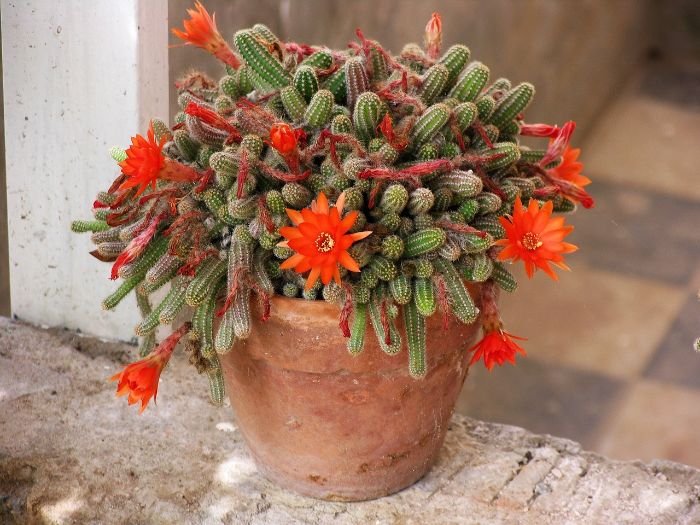
Placement matters. A pot on dark paving runs hotter at the base than the same pot on mulch. If the pot wall feels hot to a quick palm press at midday, move the container off hardscape or lift it on feet to cool the base and lengthen the moisture window.
Pro tip – If two matching pots behave differently, weigh them by hand in the morning and again at dusk. The one that loses more mass needs either a cooler perch or the next exposure category in your plan.
Seasonal swing – spring build-up, peak summer, late-season taper
Sun angle and night temperatures shift demand. When overnight lows hold above 70°F for 3 consecutive nights, expect faster drawdown even without a heat wave. When daytime highs sit under 80°F for a week, extend checks and expect a slower pace.
Rain patterns also reset the board. After the first long fall rain, salts dilute and surface structure changes, so recheck how long a standard soak takes to disappear from the top layer. In early spring, cool soil can hide water; avoid compressing intervals until you see reliable mid-afternoon lift across several warm days.
Pro tip – Set a standing cadence for recalibration – a quick noon walk on the first warm day of each month. Touch walls, paving, and pot sides, then adjust only the zones that read hottest or coolest.
Wrap-up – Microclimates and season markers change how quickly water leaves. Re-rate zones by what you can touch and time, then plug those zones into your existing exposure-based plan without rewriting the whole garden.
Tools, Tests, and Small Tweaks that Save Water
Use simple checks and small adjustments to match watering to light. Calibrate once, then maintain a light-touch routine that reacts to real conditions, not a calendar.
Quick tests – meter calibration, screwdriver probe, pot weight
A basic moisture meter is useful only if you calibrate it on your soil. Soak a test spot until water reaches mid-profile, wait 30-45 minutes, then note the reading as your wet benchmark. Return the next day at noon and record the new number for your dry-side reference under sun exposure.
A 6-8 inch screwdriver tells you more than surface color. Push it straight down near the root zone. Easy glide for the top 2-3 inches means recent watering; firm resistance below that depth on a hot day means the root zone is drying faster than the surface.
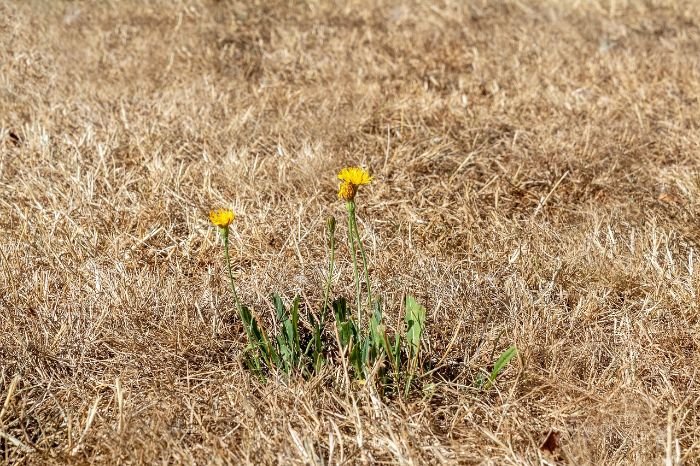
Heft containers right after a full drink and remember the feel. Recheck at the same time the next day. If the pot feels markedly lighter and the mix no longer clings to the inner wall, schedule the next cycle. I log the weight change by hand for two days at the start of summer and use that drop pattern as my season baseline.
Pro tip – Create one labeled “calibration pot” per soil mix. Calibrate once, then apply the same meter range and weight feel to matching containers.
Method tweaks – mulch depth, emitter flow, time of day
Mulch slows sun-driven loss from the surface. In bright beds, aim for 1-2 inches of fine bark or shredded leaves; in shade, keep it thinner to avoid damp pockets. Rake and fluff monthly so it wets evenly instead of shedding water.
Match emitter output to exposure. In full sun, use lower-flow emitters or a soaker line to deliver longer sets without runoff. In part sun, shorten runtime rather than throttling flow to avoid hanging moisture near the crown.
Time application for cooler hours. Early morning gives the longest infiltration window before heat and wind build. If you must water late day in summer, split the volume into two short passes 10-15 minutes apart to help the profile take it in.
Pro tip – If water beads on dry mulch, pre-wet with a gentle pass, pause 5 minutes, then run the main set. That breaks hydrophobicity and reduces waste.
Safety margins in shade-heavy beds
Shade keeps moisture longer, so adjust with air and spacing before touching the schedule. Open a finger’s width between dense stems, and pull mulch back 1 inch from crowns to keep collars dry.
Watch for early warnings of saturation. Mushy surface, sour odor after rain, or algae on the top layer means reduce volume first, then widen interval. If roots sit cool and wet, switch from overhead passes to a short, low-flow drip that places water an inch off the stem.
Pro tip – After a rain event that lasts 4-6 hours, skip the next planned irrigation in shade zones and reassess at noon the following day. Shade plus rain often carries plants longer than you think.
Wrap-up – Calibrate once, test quickly at the same points each week, and apply small, exposure-aware adjustments. The tools confirm need, and the tweaks keep moisture where roots can use it without encouraging surface wetness.
Conclusion – Balancing Light and Water Over Time
Sunlight and moisture work on the same clock, each shaping how roots grow and how soil behaves. Once you understand their rhythm, irrigation becomes less about routine and more about timing that fits each zone’s exposure.
Consistency in observation beats fixed schedules. Watch how fast the surface changes after bright days, how containers respond to shifts in angle or wind, and how long shade holds coolness. Patterns reveal themselves quickly once you measure by eye and touch instead of dates.
Small adjustments such as trimming runtime, moving mulch, and recalibrating every few weeks build a resilient system that adapts naturally with each season. Keep light, heat, and soil moisture in conversation, and your garden will stay balanced through both bright and quiet months.
FAQ
How should I change watering during a heat wave without causing root problems?
Shorten the gap between irrigations only for zones that show mid-afternoon wilt and warm leaf surfaces; keep the per-watering volume the same so water reaches the active root layer rather than pooling near crowns. If nights stay hot, split the same total volume into two shorter sets about 15-20 minutes apart at dawn to improve uptake without leaving a wet cap.
Do dark mulch or gravel beds near walls change how often I water?
Yes, dark surfaces and nearby masonry absorb and re-radiate heat, which raises surface temperature and accelerates dry-down along the sun-facing edge. If you can feel extra warmth when you place a hand on the mulch at noon, treat that strip as a higher-demand zone and move it to a tighter schedule, or swap to lighter mulch and add a thin organic layer to slow heat gain.
What is different about watering new plantings in full sun vs established shrubs?
Fresh transplants have limited root reach, so in bright exposures give smaller, more frequent drinks that wet the immediate root ball while still allowing air space between cycles; once growth resumes and resistance to a gentle tug increases, stretch the interval and deepen the soak. Established shrubs can handle longer gaps in the same light because wider roots tap cooler subsoil, but still watch for one-sided wilt on the sunniest flank.
Can a smart controller handle watering by sunlight exposure on its own?
Only if you feed it zone-level data that reflects exposure and surface materials; default programs often treat mixed beds as equal. Assign separate zones for bright strips versus shaded beds, set different runtime caps, and use a solar sensor or weather-based schedule as a cap rather than the sole driver, then confirm with on-site checks the first week after changes.
Containers in strong sun look damp on top but wilt by midday; what should I check?
Lift the pot right after watering and again at the same time the next day; a sharp drop in weight with warm pot walls means moisture is leaving through the sides and the top film is misleading. Move the container off hot paving, elevate it on feet for airflow under the base, and water with a slower application so the profile wets through instead of glazing the surface.
How do wind and balcony height affect sunny container care?
Elevated sites often have sustained breezes that strip humidity from leaf surfaces, so expect faster drawdown than ground level in the same light. If leaves feel warm and soft by lunchtime on windy days, tighten the interval for those pots, use a more sheltered placement, and switch to a watering method that delivers slowly to avoid runoff over dry media.
Under drought rules, how do I prioritize zones by light to keep plants alive?
Keep the most sun-exposed perennials and young trees on the minimal life-support schedule and allow shade beds to coast between cycles; focus water where afternoon sun and reflected heat meet. If a zone perks up by dusk after a light drink, it can wait; if it does not rebound, allocate your limited volume there first on the next cycle.
How often should I revisit sunlight and watering needs across the season?
Run a quick noon audit at the start of each month and after any layout change; touch walls, paving, and pot sides, then adjust only zones that read hotter or cooler than before. A small, regular recalibration keeps watering by sunlight exposure aligned with shifting sun angle and plant canopy without rebuilding your entire schedule.






